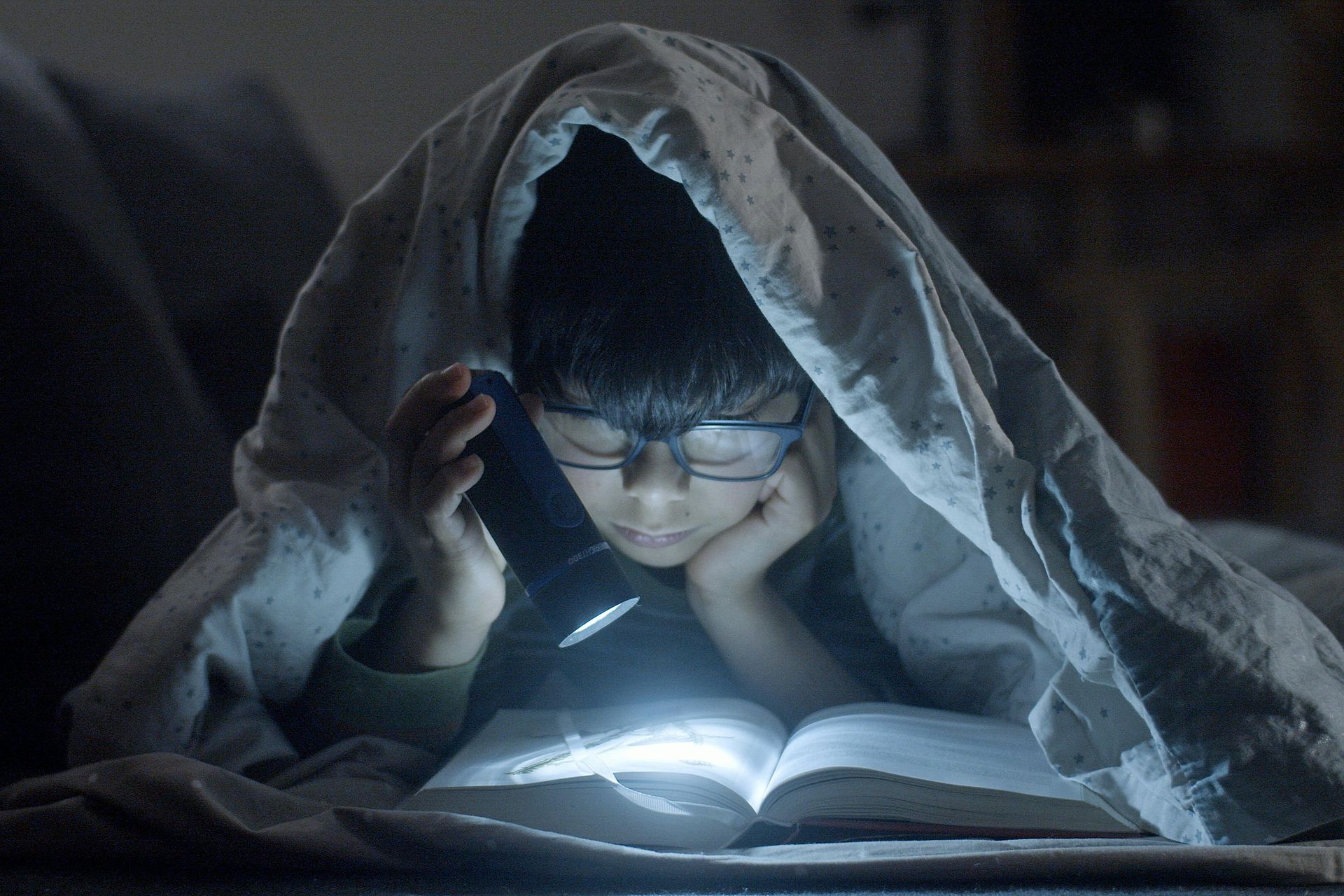Navigating Nostalgic Branding: Case Studies, Challenges, and Future Trend
AJ Oberlender

Following our
deep dive into the power of nostalgia in branding
, let’s now explore its real-world applications, challenges, and future trends.
Having explored the power of nostalgia and how to implement it in branding, we now turn our attention to the journey of nostalgic branding. This journey is not without its challenges and pitfalls, but it also presents incredible opportunities for brands that are able to navigate it effectively. In this blog post, we’ll look at some case studies of brands that have used nostalgia successfully, discuss potential challenges and how to overcome them, and explore future trends in nostalgic branding.
Nostalgia can also be effectively leveraged in the design of products and services. From retro-inspired products that remind customers of beloved items from the past, to services that recreate experiences from bygone eras, nostalgia can create a unique value proposition that sets a brand apart from its competitors.
However, it’s important for brands to remember that while nostalgia can add a layer of emotional appeal to their products or services, it should not compromise on the quality or relevance of the offering. The best nostalgic products and services are those that combine the charm of the past with the functionality and convenience of the present.
Creating a nostalgic customer experience involves more than just offering nostalgic products or services. It’s about crafting a customer journey that immerses consumers in a nostalgic atmosphere every step of the way, from the moment they first interact with the brand, through the purchasing process, to post-purchase interactions.
This could involve designing retail spaces that recreate the ambiance of a certain era, training customer service representatives to evoke a sense of old-fashioned courtesy and charm, or perhaps developing a loyalty program that rewards customers with experiences that take them down memory lane.
Promoting a nostalgic brand requires a thoughtful and strategic approach to marketing. Here are a few techniques that can be effective:
Several brands have successfully leveraged the power of nostalgia in their branding strategies. Let’s look at a few examples.
Some brands have successfully leveraged nostalgia in their branding, providing valuable lessons for others. These case studies can illustrate how nostalgia can be effectively incorporated into various aspects of branding, from brand storytelling to product design to customer experience.
Examples might include a brand that has successfully reinvented a classic product for the modern consumer, a brand that has capitalized on a cultural revival trend, or perhaps a brand that has used nostalgia to reposition itself in the market. By learning from these successful examples, other brands can gain insights and inspiration for their own nostalgic branding strategies.
Like any branding strategy, daring nostalgia carries both risks and rewards. The main risk is that nostalgia, if not done correctly, can come across as gimmicky or insincere. It can make the brand seem like it’s trying too hard to relate to its audience, which can alienate consumers rather than drawing them in.
However, when done correctly, the rewards can be substantial. Daring nostalgia can differentiate a brand from its competitors, create a strong emotional connection with its audience, and establish a unique brand identity that stands out in the market.
While nostalgia can be a powerful tool in branding, it’s not without its challenges and potential pitfalls. One of the main risks is that nostalgia can be seen as manipulative, particularly if it’s perceived as a cynical attempt to cash in on consumers’ fond memories of the past.
Another challenge is ensuring that nostalgic branding appeals to a wide range of consumers. While older consumers might respond positively to reminders of their youth, younger consumers might not have the same nostalgic connections. Therefore, brands need to ensure that their nostalgic branding resonates with their target demographic, without alienating other potential customers.
Just like any other branding strategy, the impact of nostalgic branding needs to be measured to understand its effectiveness. This can be done through a variety of methods such as customer surveys, social media analytics, and sales data. You can also look at metrics like brand recognition, brand recall, and customer sentiment towards your brand.
One of the key indicators of the success of nostalgic branding is the emotional response it generates from your audience. This can be gauged through social media comments, customer testimonials, and reviews.
As we look to the future, it’s clear that nostalgic branding will continue to be a powerful strategy for brands. However, the landscape is continually evolving, and brands need to stay attuned to changing consumer attitudes, cultural trends, and technological advancements.
One of the key trends to watch is the rise of digital nostalgia, driven by the rapid pace of technological change. This might involve nostalgia for early internet culture, vintage video games, or perhaps the simpler digital experiences of the past. Brands that can tap into these emerging forms of digital nostalgia will be well-positioned to engage with a new generation of consumers.
As we look towards the future, it’s clear that nostalgic branding will continue to evolve. We can expect to see more brands leveraging emerging technologies like AR and VR to create immersive nostalgic experiences. We can also expect to see brands tapping into more recent periods for nostalgic inspiration, such as the early 2000s.
Furthermore, as the world becomes increasingly digital, there will likely be a growing desire for tangible, physical experiences that remind us of simpler times. Brands that can capitalize on this trend by offering nostalgic physical experiences alongside their digital ones will likely stand out.
The future of nostalgic branding is as exciting as it is uncertain. With ever-changing consumer attitudes and rapid technological advancements, brands need to be adaptable and forward-thinking in their approach. However, one thing is clear: nostalgia, when used effectively, will continue to be a powerful tool in the branding arsenal. By understanding the potential challenges and keeping an eye on future trends, brands can continue to use nostalgia to create memorable experiences, foster a deep emotional connection with their audience, and ultimately, drive success.
Introduction
Having explored the power of nostalgia and how to implement it in branding, we now turn our attention to the journey of nostalgic branding. This journey is not without its challenges and pitfalls, but it also presents incredible opportunities for brands that are able to navigate it effectively. In this blog post, we’ll look at some case studies of brands that have used nostalgia successfully, discuss potential challenges and how to overcome them, and explore future trends in nostalgic branding.
Nostalgia in Product and Service Design
Nostalgia can also be effectively leveraged in the design of products and services. From retro-inspired products that remind customers of beloved items from the past, to services that recreate experiences from bygone eras, nostalgia can create a unique value proposition that sets a brand apart from its competitors.
However, it’s important for brands to remember that while nostalgia can add a layer of emotional appeal to their products or services, it should not compromise on the quality or relevance of the offering. The best nostalgic products and services are those that combine the charm of the past with the functionality and convenience of the present.
Nostalgia in Customer Experience
Creating a nostalgic customer experience involves more than just offering nostalgic products or services. It’s about crafting a customer journey that immerses consumers in a nostalgic atmosphere every step of the way, from the moment they first interact with the brand, through the purchasing process, to post-purchase interactions.
This could involve designing retail spaces that recreate the ambiance of a certain era, training customer service representatives to evoke a sense of old-fashioned courtesy and charm, or perhaps developing a loyalty program that rewards customers with experiences that take them down memory lane.
Marketing Techniques for Promoting Your Nostalgic Brand
Promoting a nostalgic brand requires a thoughtful and strategic approach to marketing. Here are a few techniques that can be effective:
- Social Media Campaigns: Social media is a powerful tool for promoting a nostalgic brand. You can use it to share nostalgic content, engage with your audience, and build a community around your brand.
- Content Marketing: Content marketing can be a great way to share your brand’s nostalgic narrative. This could be through blog posts, videos, podcasts, or even interactive content.
- Experiential Marketing: Experiential marketing can create immersive experiences that transport your audience back in time, helping to reinforce your brand’s nostalgic identity.
- Influencer Marketing: Influencers can help to amplify your brand’s nostalgic narrative, reaching a wider audience and creating a buzz around your brand.
- Collaborations:
Collaborating with other brands or creators can be a great way to promote your nostalgic brand, creating unique and exciting experiences for your audience.
Case Studies of Brands Using Nostalgia Effectively
Several brands have successfully leveraged the power of nostalgia in their branding strategies. Let’s look at a few examples.
- Coca-Cola: This iconic brand has a rich history that spans over a century. Coca-Cola frequently taps into this history in its marketing campaigns, often bringing back vintage logos, designs, and ad campaigns to create a sense of nostalgia. However, it always manages to do so in a way that is contemporary and relevant.
- LEGO: LEGO has managed to remain relevant for generations, largely due to its effective use of nostalgia. The brand often reintroduces older sets and themes, evoking memories of childhood playtime among its adult consumers.
- Netflix’s ‘Stranger Things’:
This popular TV series is a great example of daring nostalgia. It’s set in the 1980s and incorporates a plethora of cultural references from the era, yet its storylines and themes are thoroughly modern.
Case Studies of Successful Nostalgic Branding
Some brands have successfully leveraged nostalgia in their branding, providing valuable lessons for others. These case studies can illustrate how nostalgia can be effectively incorporated into various aspects of branding, from brand storytelling to product design to customer experience.
Examples might include a brand that has successfully reinvented a classic product for the modern consumer, a brand that has capitalized on a cultural revival trend, or perhaps a brand that has used nostalgia to reposition itself in the market. By learning from these successful examples, other brands can gain insights and inspiration for their own nostalgic branding strategies.
The Risk and Reward of Daring Nostalgia
Like any branding strategy, daring nostalgia carries both risks and rewards. The main risk is that nostalgia, if not done correctly, can come across as gimmicky or insincere. It can make the brand seem like it’s trying too hard to relate to its audience, which can alienate consumers rather than drawing them in.
However, when done correctly, the rewards can be substantial. Daring nostalgia can differentiate a brand from its competitors, create a strong emotional connection with its audience, and establish a unique brand identity that stands out in the market.
Challenges and Pitfalls in Nostalgic Branding
While nostalgia can be a powerful tool in branding, it’s not without its challenges and potential pitfalls. One of the main risks is that nostalgia can be seen as manipulative, particularly if it’s perceived as a cynical attempt to cash in on consumers’ fond memories of the past.
Another challenge is ensuring that nostalgic branding appeals to a wide range of consumers. While older consumers might respond positively to reminders of their youth, younger consumers might not have the same nostalgic connections. Therefore, brands need to ensure that their nostalgic branding resonates with their target demographic, without alienating other potential customers.
Measuring the Impact of Nostalgic Branding
Just like any other branding strategy, the impact of nostalgic branding needs to be measured to understand its effectiveness. This can be done through a variety of methods such as customer surveys, social media analytics, and sales data. You can also look at metrics like brand recognition, brand recall, and customer sentiment towards your brand.
One of the key indicators of the success of nostalgic branding is the emotional response it generates from your audience. This can be gauged through social media comments, customer testimonials, and reviews.
Navigating the Future of Nostalgic Branding
As we look to the future, it’s clear that nostalgic branding will continue to be a powerful strategy for brands. However, the landscape is continually evolving, and brands need to stay attuned to changing consumer attitudes, cultural trends, and technological advancements.
One of the key trends to watch is the rise of digital nostalgia, driven by the rapid pace of technological change. This might involve nostalgia for early internet culture, vintage video games, or perhaps the simpler digital experiences of the past. Brands that can tap into these emerging forms of digital nostalgia will be well-positioned to engage with a new generation of consumers.
Future Trends in Nostalgic Branding
As we look towards the future, it’s clear that nostalgic branding will continue to evolve. We can expect to see more brands leveraging emerging technologies like AR and VR to create immersive nostalgic experiences. We can also expect to see brands tapping into more recent periods for nostalgic inspiration, such as the early 2000s.
Furthermore, as the world becomes increasingly digital, there will likely be a growing desire for tangible, physical experiences that remind us of simpler times. Brands that can capitalize on this trend by offering nostalgic physical experiences alongside their digital ones will likely stand out.
Conclusion
The future of nostalgic branding is as exciting as it is uncertain. With ever-changing consumer attitudes and rapid technological advancements, brands need to be adaptable and forward-thinking in their approach. However, one thing is clear: nostalgia, when used effectively, will continue to be a powerful tool in the branding arsenal. By understanding the potential challenges and keeping an eye on future trends, brands can continue to use nostalgia to create memorable experiences, foster a deep emotional connection with their audience, and ultimately, drive success.
By AJ Oberlender
•
February 26, 2025
Elevate your brand with our tailored web design templates. Enhance user experience and create effective branding that captivates your audience today!

By AJ Oberlender
•
October 29, 2023
In the realm of marketing, where competition is fierce, and attention spans are fleeting, how do you make your brand stand out? How do you not only grab your audience’s attention but hold it, engage it, and convert it into tangible business growth? The answer lies in one of humanity’s oldest practices: storytelling. Welcome to the world of brand storytelling. Brand Storytelling: The Ultimate Catalyst for Audience Engagement Before we delve into the mechanics of brand storytelling, it is vital to understand what it encompasses. Simply put, brand storytelling is the cohesive narrative that weaves together the facts and feelings associated with your brand. It’s not merely what you sell; it’s why you sell it, who you are, your mission, your vision, your values, and the unique journey that has led you to where you are today. It’s your brand identity presented in a relatable, human way. But why is brand storytelling so powerful? Well, the secret lies in its ability to forge an emotional connection with the audience. As human beings, we are wired for stories. Stories move us, inspire us, make us feel part of something larger than ourselves. They help us understand complex ideas, evoke emotions, and compel us to act. By telling your brand’s story, you tap into this primal power, captivating your audience and fostering a deeper, more meaningful engagement with your brand. The Brand Identity Nexus Brand storytelling and brand identity are two sides of the same coin. Your brand identity is the unique set of characteristics that distinguish your brand from others. It encompasses your brand’s personality, values, ethos, and unique selling proposition. In contrast, brand storytelling is the art of expressing this identity in a compelling narrative. As such, a strong brand story starts with a well-defined brand identity. It answers critical questions such as: Who are you as a brand? What do you stand for? What are your values and how do they align with your audience’s values? What is your brand’s personality, and how does it reflect in your offerings, interactions, and communications? What is your brand’s unique selling proposition? Your brand story then takes these elements and weaves them into a narrative that your audience can connect with emotionally. It moves beyond sterile facts and statistics and imbues your brand with life and personality. Content Marketing: The Vehicle for Your Brand Story Once you’ve crafted your brand story, the next step is to share it with the world, and this is where content marketing comes in. Content marketing is the strategic marketing approach focused on creating and distributing valuable, relevant, and consistent content to attract and retain a clearly defined audience – ultimately, to drive profitable customer action. The key to effective content marketing lies in offering value to the audience. This goes beyond merely pitching your products or services and delves into providing useful, engaging content that addresses your audience’s needs and interests. In the context of brand storytelling, content marketing becomes the vehicle for your narrative. Whether it’s through blog posts, videos, podcasts, social media updates, newsletters, or interactive media, each piece of content you produce becomes a chapter in your brand story. However, remember that consistency is crucial. Your brand story should permeate all your content, creating a unified brand image that reinforces your identity and values. Consistency breeds familiarity, and familiarity breeds trust – a critical factor in building loyal customer relationships and driving business growth. Driving Business Growth Through Brand Storytelling So, how does brand storytelling translate into tangible business growth? Here are four primary ways: 1. Enhancing Brand Recall: A compelling brand story is memorable. It helps your brand stand out in a saturated market and stays in the minds of your audience. This improved brand recall can significantly impact your brand awareness and visibility, drawing in new prospects and keeping your brand top-of-mind for existing customers. 2. Building Trust and Loyalty: By humanizing your brand and aligning it with your audience’s values, brand storytelling fosters trust and loyalty. Customers are more likely to stick with and advocate for brands they trust and share values with. This not only improves customer retention but can also drive word-of-mouth referrals, both of which are critical for business growth. 3. Driving Customer Engagement: Engaged customers are valuable customers. They are more likely to purchase from your brand, share their positive experiences, and become brand advocates. By captivating your audience with your brand story, you enhance their engagement with your brand, driving these positive behaviors. 4. Influencing Purchase Decisions: Emotional connections can significantly influence purchase decisions. By telling a compelling brand story that resonates emotionally with your audience, you can sway their purchase decisions in your favor, leading to increased sales and business growth. Putting It All Together In conclusion, brand storytelling is a powerful tool for captivating your audience and driving business growth. By defining your brand identity, weaving it into a compelling narrative, and disseminating it through consistent content marketing, you can enhance brand recall, build trust and loyalty, drive customer engagement, and influence purchase decisions. Brand storytelling is not a quick fix or a one-time project; it’s an ongoing journey. It requires authenticity, creativity, and a deep understanding of your audience. But, when done right, the rewards are worth the effort. So, start crafting your brand story today, and watch as it unlocks new potentials for your business growth. Remember, your brand is not just what you sell; it’s the story you tell. So make it a good one.








